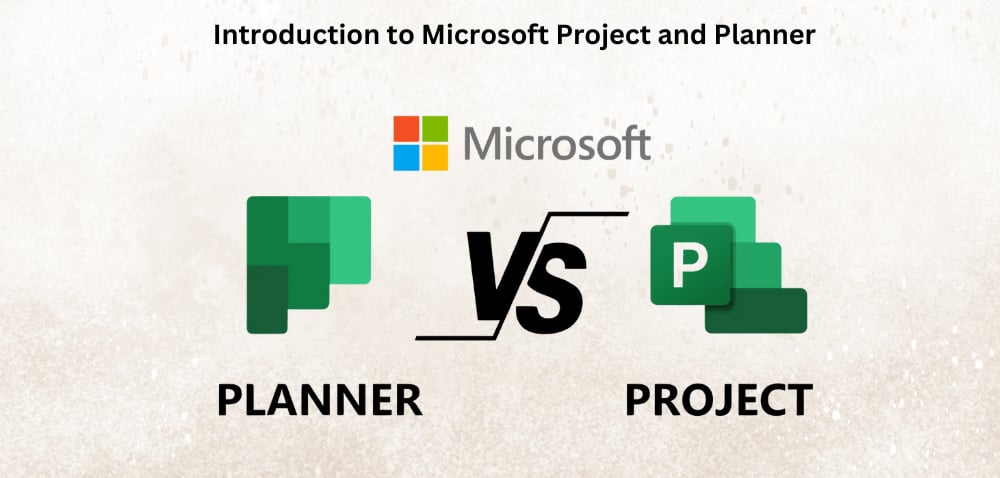Microsoft Planner and Project are two of the most often used project management programmes in the Microsoft ecosystem. Their unique features meet various project management requirements. To work effectively in project management, you can take a Microsoft Project Course. This blog will cover Microsoft Project vs Planner, and their main features and help you understand how to choose both based on the requirements.
What is Microsoft Project?
Microsoft Project is a powerful project management tool for experienced project managers overseeing challenging projects. Its tool kit allows for the planning, completion, and monitoring of any size job. Microsoft Project is best suited for large projects that call for detailed scheduling, resource management, and planning.
Key Features of Microsoft Project
- Gantt Charts: Microsoft project is famous for its Gantt charts which are a graphical representation of the project timeline. This feature will enable project managers to follow the job’s progress, to see the start and finish date of tasks, and find dependencies between tasks.
- Resource Management: Microsoft Project allows you to allocate resources to jobs, monitor their availability, and control workloads. This avoids over-allocation and helps to guarantee effective use of resources.
- Advanced Scheduling: The program provides custom calendars, work prioritisation, and critical path analysis, among other advanced scheduling features. These functions support the project schedule optimisation and potential delay identification.
- Integration: The Microsoft Project has several functionalities such as compatibility with other Microsoft tools like Excel, PowerPoint, and Teams.
- Reporting: The software’s strong reporting capabilities enable project managers to generate comprehensive information on project status, resource usage, and budget performance. These reports may be customised to meet the specific needs of stakeholders.
What is Microsoft Planner?
Unlike classic project management programs, Microsoft Planner is a simpler, more intuitive product specially designed for users who may need to organize and collaborate with each other. It is ideal for small to medium-sized projects that requires more flexibility and the low level of complexity. It is also a tool included in the Microsoft’s 365 package.
Key Features of Microsoft Planner
- Task Boards: The planner uses Kanban-style task boards to organise tasks into buckets. This visual method makes it easier to see what must be done next, what is finished, and what is in progress.
- Task Assignment and Collaboration: The planner collaborate and assign tasks to team members, specify due dates, and include task specifics. Team members can update their work, attach files, and comment on jobs, promoting cooperation and communication.
- Checklists and Labels: The planner lets you use checklists to divide jobs into manageable chunks. Labelling helps you to prioritise better and arrange your work.
- Integration with Microsoft 365: Planner’s integration with Microsoft 365 is powerful, much like that of Microsoft Project’s integration with Teams, Outlook, and SharePoint. Team cooperation and smooth communication are maintained with this integration.
- Mobile Access: The Microsoft Planner mobile app allows team members to access and update tasks while on the road. This function is particularly helpful for remote teams and anyone who must handle work.
When to Use Microsoft Project vs Microsoft Planner
The intricacy of your project and your team’s requirements will determine whether to choose Microsoft Project or Planner. Using the following guidelines will assist you in selecting the correct tool:
- Project Complexity: Microsoft Project is suitable for a complicated project that includes many activities, dependencies, and resources. Intricate project plans require sophisticated scheduling and resource management capabilities.
- Team Size and Cooperation: Microsoft Planner is best for smaller teams or projects that stress task tracking and cooperation. Its easy-to-use interface enables team members to communicate clearly.
- Budget and Reporting Needs: Microsoft Project offers the capabilities you need if your project requires in-depth budget tracking and complex reporting. Its powerful reporting capabilities let you create detailed reports tailored to different stakeholders.
- Learning Curve: The intricacy and sophisticated features of Microsoft Project make its learning curve harder. Should your team members lack project management knowledge, they can find Microsoft Planner more user-friendly and approachable.
- Integration Needs: Depending on how you intend to use other Microsoft products, either tool will work well with Microsoft 365. For example, Planner and Microsoft Project let you share documents via SharePoint or work regularly in Teams; the decision may depend on the other capabilities you require.
Conclusion
Microsoft Planner and Project are potent project management tools with unique advantages and uses. Microsoft Planner is ideal for smaller teams and projects that value collaboration and simplicity; Microsoft Project is best suited for intricate, large-scale projects that need thorough planning and resource management. To ensure your projects are completed effectively and efficiently, it’s important to understand the features and capabilities of each project management tool. This knowledge helps you make the best decision for your project management needs.














